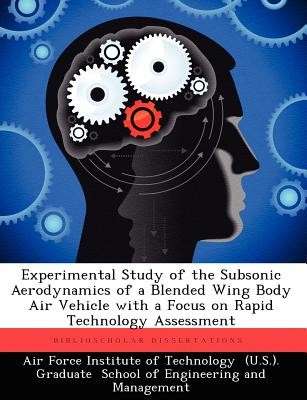| Experimental Study of the Subsonic Aerodynamics of a Blended Wing Body Air Vehicle with a Focus on Rapid Technology Assessment Contributor(s): Air Force Institute of Technology (Created by), Gebbie, David A. (Author) |
|
 |
ISBN: 124939791X ISBN-13: 9781249397915 Publisher: Biblioscholar OUR PRICE: $55.05 Product Type: Paperback Published: September 2012 |
| Additional Information |
| BISAC Categories: - Education |
| Physical Information: 0.34" H x 7.44" W x 9.69" (0.66 lbs) 160 pages |
| Descriptions, Reviews, Etc. |
| Publisher Description: The subsonic aerodynamic performance of a blended wing body aircraft constructed using selective laser sintering was assessed in the AFIT low-speed wind tunnel. The scaled-down model of a strike tanker aircraft consisted of a shaped fuselage and sweptback wings. The Reynolds number, based on mean wing chord, during testing was on the order of 105 while the Mach number ranged from 0.10 to 0.20. The model evaluation and analysis process included force and moment measurements acquired from a wind tunnel balance, pressure data measured with 8 taps located on the model's upper surface, a comparison to computational fluid dynamics (CFD) solutions acquired in a parallel study conducted by AFRL/VAAC, and global pressure sensitive paint (PSP) measurements. Paint measurements were compared to pressure tap data to ensure their accuracy while lift and drag coefficients, as well as pitching and rolling moments were examined to determine performance characteristics, including stability attributes and aircraft stall. One of the most interesting results was the striking difference in the force and moment measurements before and after the paint was applied to the surface. The average surface roughness, Ra, was measured with a profilometer and was found to have increased from approximately 0.3 m to 0.7 m when the paint was applied. When traditional 2-D boundary layer approaches to assessing the effect of roughness, the 0.7 m value falls well below the threshold at which one would anticipate roughness to have any effect. There is support in archival literature for the notion that roughness effects are more pronounced in a 3-D boundary layer, and the pitching moment data and the PSP data indicate that the for the painted model, there is a gradual onset of wing stall marching inward from the wingtips toward the body. By contrast, the force and, in particular, the pitching moment data suggests that the onset of wing stall is sudden across the entire wing for the unpainted case. Inte |